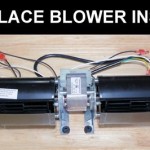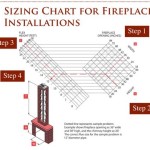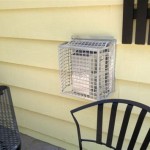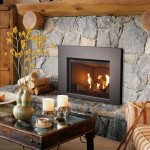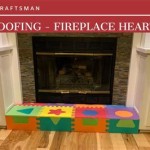Wildon Home Fireplace: A Comprehensive Guide
Wildon Home fireplaces represent a popular choice for homeowners seeking to enhance the ambiance and heating capabilities of their living spaces. These fireplaces encompass a range of styles, fuel types, and installation options, catering to diverse aesthetic preferences and practical needs. Understanding the features, benefits, and considerations associated with Wildon Home fireplaces is essential for making an informed purchase and ensuring long-term satisfaction.
Types of Wildon Home Fireplaces
Wildon Home offers a variety of fireplace types, each possessing unique characteristics and advantages. These primarily fall into three categories: electric, gas, and wood-burning fireplaces. The selection depends on factors like heating requirements, maintenance preferences, installation possibilities, and environmental concerns.
Electric Fireplaces: Electric fireplaces, often the most convenient to install, require only a standard electrical outlet. These fireplaces function by using electric heating elements to generate warmth, often combined with realistic flame effects. Electric fireplaces are available as freestanding units, wall-mounted models, and fireplace inserts that can be placed within existing fireplace openings. Their ease of installation and operation makes them a popular choice for apartments, condominiums, and homes without existing fireplace infrastructure.
The primary advantages of electric fireplaces include their simplicity, safety, and versatility. They do not produce actual flames, eliminating the risk of fire hazards associated with gas or wood-burning alternatives. Many models feature adjustable heat settings and flame brightness, allowing users to customize their comfort and visual experience. Furthermore, electric fireplaces do not require venting, simplifying installation and reducing associated costs. However, their heating capacity is typically lower than gas or wood-burning models, making them better suited for supplemental heating rather than primary heating sources.
Gas Fireplaces: Gas fireplaces rely on natural gas or propane to fuel a live flame. These fireplaces offer a realistic flame appearance and significant heating output. Gas fireplaces are available in direct-vent, vent-free, and B-vent configurations, each with its own installation requirements and safety considerations.
Direct-vent gas fireplaces are considered the safest and most efficient option. They draw combustion air from outside the home and vent exhaust gases directly outdoors through a sealed system. This prevents the release of harmful byproducts into the living space, ensuring optimal indoor air quality. Vent-free gas fireplaces, on the other hand, do not require venting, but they must be used with caution due to the potential for carbon monoxide buildup. These models typically include oxygen depletion sensors that shut off the unit if oxygen levels become dangerously low. B-vent gas fireplaces utilize existing chimneys for venting, but they are less efficient than direct-vent models and may require upgrades to ensure proper functionality.
Gas fireplaces offer a blend of aesthetic appeal and heating performance. They provide a consistent and controllable heat output, making them suitable for both supplemental and primary heating purposes. However, installation typically requires professional assistance to connect the gas line and ensure proper venting. Furthermore, gas fireplaces require regular maintenance, including cleaning and inspection, to ensure safe and efficient operation.
Wood-Burning Fireplaces: Wood-burning fireplaces represent the traditional option, offering a classic aesthetic and the distinct aroma of burning wood. These fireplaces require a chimney for venting smoke and combustion gases. Wood-burning fireplaces can be masonry fireplaces built from brick or stone, or prefabricated metal fireplaces that are designed for easier installation.
Wood-burning fireplaces provide a significant amount of heat, but they also require more effort and maintenance than electric or gas options. Sourcing and storing firewood can be labor-intensive, and the burning process produces smoke, ash, and creosote. Creosote buildup in the chimney can pose a fire hazard, requiring regular chimney cleaning. Furthermore, wood-burning fireplaces are subject to local regulations regarding emissions and air quality.
Despite these challenges, wood-burning fireplaces remain popular for their ambiance and authentic appeal. Many homeowners appreciate the crackling sound of burning wood and the visual warmth of a real flame. Modern wood-burning fireplaces often incorporate features like airtight doors and catalytic converters to improve efficiency and reduce emissions.
Key Features and Technologies
Wildon Home incorporates various features and technologies into its fireplaces to enhance performance, safety, and convenience. These include flame effect technologies, heating controls, safety features, and energy-saving options.
Flame Effect Technologies: Electric fireplaces utilize advanced flame effect technologies to mimic the appearance of a real fire. These technologies often involve LED lighting, reflective surfaces, and moving components to create realistic flickering flames. Some models offer adjustable flame colors and brightness levels, allowing users to customize the visual experience. Gas fireplaces feature realistic log sets that are designed to resemble natural wood. These log sets are often crafted from ceramic or refractory materials that can withstand high temperatures.
Heating Controls: Wildon Home fireplaces offer a range of heating controls to regulate temperature and energy consumption. Electric fireplaces typically feature adjustable thermostats and multiple heat settings. Gas fireplaces may include thermostatic controls, remote controls, and programmable timers. These controls allow users to precisely manage the heat output and operating schedule of the fireplace, optimizing comfort and minimizing energy waste. Some models also incorporate zonal heating capabilities, allowing users to heat specific areas of a room rather than the entire space.
Safety Features: Safety is a paramount concern in fireplace design. Wildon Home fireplaces incorporate various safety features to protect users and prevent accidents. Electric fireplaces often include overheat protection mechanisms that automatically shut off the unit if it becomes too hot. Gas fireplaces feature oxygen depletion sensors (ODS) that detect low oxygen levels and shut off the gas supply. Wood-burning fireplaces require proper chimney construction and regular chimney cleaning to prevent creosote buildup and fire hazards.
Energy-Saving Options: Modern fireplaces are designed with energy efficiency in mind. Electric fireplaces utilize LED lighting, which consumes significantly less energy than traditional incandescent bulbs. Gas fireplaces can achieve high efficiency ratings through the use of direct-vent technology and sealed combustion systems. Wood-burning fireplaces can be equipped with airtight doors and catalytic converters to improve combustion efficiency and reduce emissions. Furthermore, proper insulation around the fireplace can help prevent heat loss and improve overall energy performance.
Installation and Maintenance Considerations
The installation and maintenance requirements of Wildon Home fireplaces vary depending on the type of fireplace and the specific model. Proper installation is crucial for ensuring safe and efficient operation. Regular maintenance is essential for preserving the functionality and longevity of the fireplace.
Electric Fireplace Installation: Electric fireplaces are typically the easiest to install, requiring only a standard electrical outlet. Wall-mounted models may require some basic carpentry skills to securely mount the fireplace to the wall. Freestanding models can simply be placed in the desired location and plugged in. However, it is important to follow the manufacturer's instructions carefully to ensure proper installation and prevent electrical hazards.
Gas Fireplace Installation: Gas fireplace installation requires professional assistance to connect the gas line and ensure proper venting. A qualified gas technician should perform the installation to ensure compliance with local codes and safety regulations. Direct-vent gas fireplaces require the installation of a vent pipe that extends through an exterior wall or roof. Vent-free gas fireplaces do not require venting, but they must be used with caution and in well-ventilated spaces. B-vent gas fireplaces require an existing chimney for venting, but the chimney may need to be inspected and upgraded to ensure proper functionality.
Wood-Burning Fireplace Installation: Wood-burning fireplace installation requires careful planning and construction. Masonry fireplaces must be built by a qualified mason, ensuring proper firebox construction and chimney design. Prefabricated metal fireplaces are easier to install, but they still require proper venting and adherence to building codes. The chimney must be properly sized and constructed to ensure adequate draft and prevent smoke from entering the home. Regular chimney cleaning is essential to remove creosote buildup and prevent chimney fires.
Maintenance Requirements: Regardless of the fireplace type, regular maintenance is crucial for ensuring safe and efficient operation. Electric fireplaces require minimal maintenance, but the heating elements and flame effect components may need to be replaced periodically. Gas fireplaces require regular inspection and cleaning of the burner, pilot light, and vent system. A qualified technician should perform these tasks to ensure proper functioning and prevent gas leaks. Wood-burning fireplaces require regular chimney cleaning to remove creosote buildup. A professional chimney sweep should perform this task at least once a year, or more frequently if the fireplace is used extensively.
Choosing a Wildon Home fireplace involves careful consideration of various factors, including fuel type, installation requirements, heating needs, and aesthetic preferences. Understanding the features, benefits, and maintenance considerations associated with each type of fireplace will allow homeowners to make an informed decision and enjoy the warmth and ambiance of a fireplace for years to come.

Wildon Home Adryel 72 83 W Storage Credea With Electric Fireplace Included In 2024 Living Room Setup Tv

Wildon Home Clark Electric Fireplace Indoor

Wildon Home Conway Electric Fireplace With Bookcases Free Standing

Corten Steel Chiminea Wood Burning Fireplace For Garden Use China Made In Com

Wildon Home Petty Corner Convertible Electric Fireplace Tv Stand

Wildon Home Sparta Loft Portable Indoor Outdoor Fireplace Chimeneas Chimenea De Etanol Hogar

Tv Stand With Fireplace Visualhunt

Charlton Home Maranto Tv Stand For Tvs Up To 65 With Electric Fireplace Included Wildon

Wildon Home Ashka 14 2 W Electric Stove Style Fireplaces

Wildon Home Tealight Fireplace Decorative Logs Reviews Candles In Diy
Related Posts

